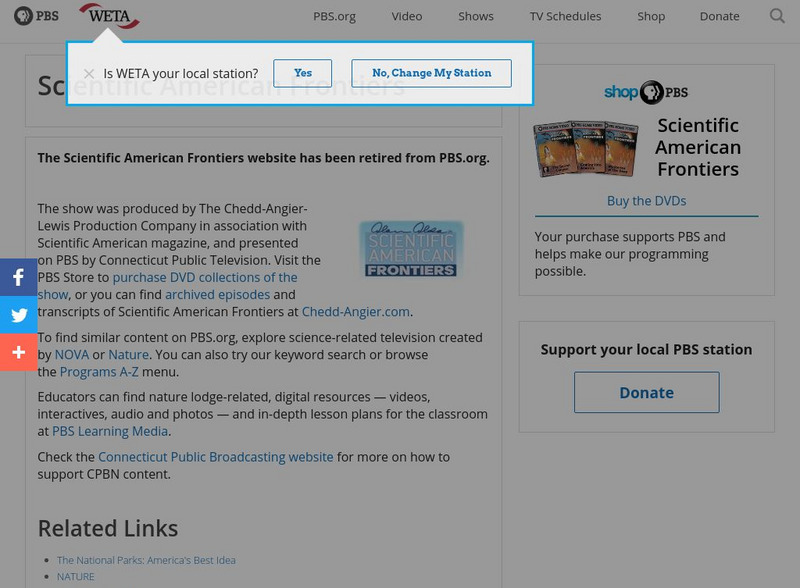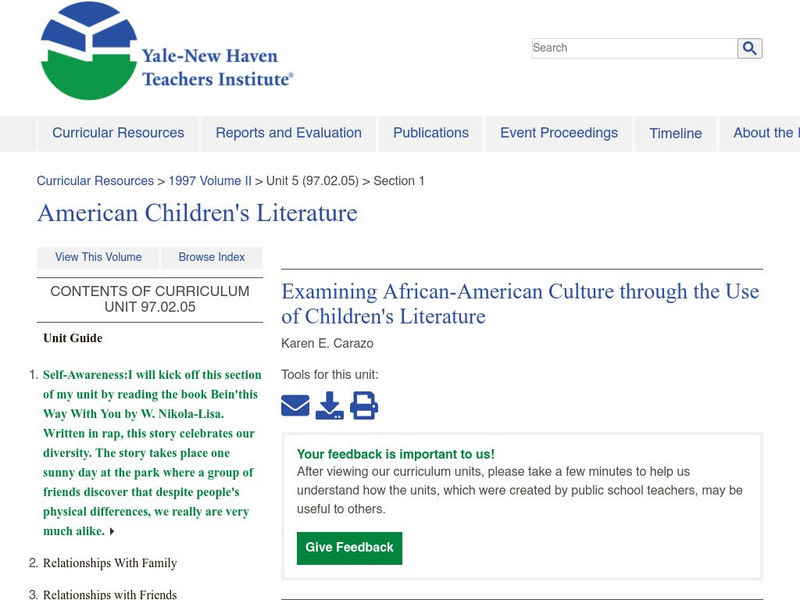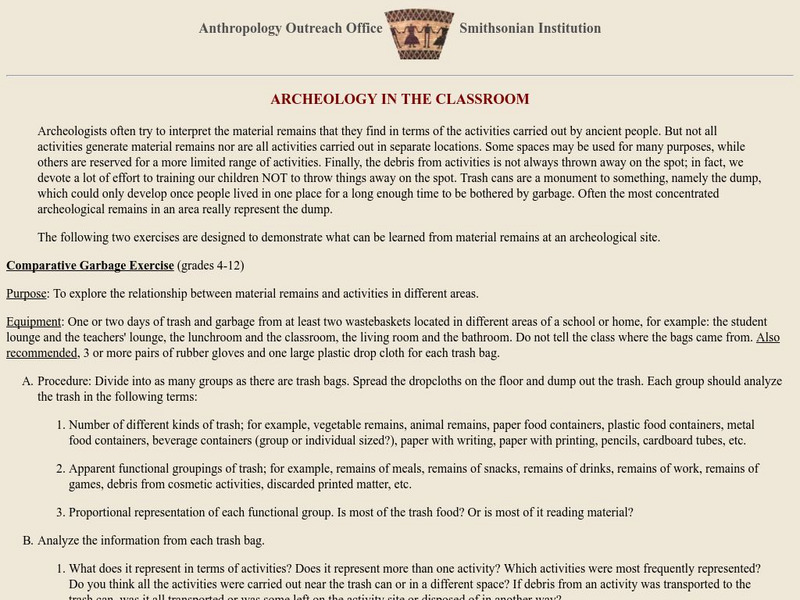Hi, what do you want to do?
Curated OER
Facts, Feats and Folklore: Spiders
Students review and discuss a variety of sayings, folklore and superstitions about spiders. They discuss this information and choose either an interesting fact or appealing foklore tradition to illustrate.
Curated OER
Letters from the Japanese American Internment
Students make deductions about life in an internment camp by reading and comparing letters written to Clara Breed. Along the way, they consider the advantages of looking at a historical event from the multiple points of view of...
Curated OER
Ecosytems: Water Purification
Students explore how ecosystems purify water and what kinds of things humans do that alter these processes. They use a website to access information on local watersheds and develop a "river" newspaper
Curated OER
Understanding Artifacts
Students will develop a greater awareness of the things surrounding them and will be able to build a bridge between their own material culture and that of an imaginary figure from the past. This lesson focuses on the significance of...
Curated OER
Buried in Ice: The Mystery of a Lost Arctic Expedition
Students read a novel about a lost arctic expedition by Sir John Franklin. In groups, they discuss the author's quest to determine what happened to Franklin and his crew. Using the internet, they compare and contrast the expeditions by...
Curated OER
Predicting the Past
Students study how archaeologists record the past. They discuss archaeology and artifacts. They view a list of artifacts discovered by Marquette at the Illinois Village and answer questions regarding them. They complete a test about...
Curated OER
Biology: Howler Monkeys Tell All
Students examine a PBS special about howler monkeys as an introduction to scientific forensic investigative methods. In groups, they conduct a host of experiments containing clues which point to discovery. By challenging assumptions,...
Curated OER
What is Rock Art?
Students complete the list of vocabulary words and terms and complete the Quick Facts section of a website and answer questions using 2 or 3 sentences from the worksheet about rock art. They then have their names sent to the website and...
Curated OER
Baga Drum
Students examine a Baga Drum in order to explore the history of the Baga people of West Africa. For this art history lesson, students recognize figures used in Baga Drum design that represent aspects of Baga culture. They also design and...
Curated OER
Folklore in Zora Neale Hurston's Their Eyes Were Watching God
Students read Zora Hurston's Their Eyes Were Watching God and explore her life history as well as novel analysis activities. In this novel analysis instructional activity, students identify elements in the novel and its overall literary...
Curated OER
Nuts & Bolts: is Classification, Arbitrary, Or Not?
Learners, in groups, classify furniture, share their categories and rationales, then note how their different schemes vary, perfectly logical and useful, but completely arbitrary.
Curated OER
Polymer Clay Millefiori Cane Beads
Students explore how to make millefiori cane beads. They use clay and beads to form the unique art.
Google
Louisiana Curriculum Hub: Ela Guidebooks: Grade 8: Written in Bone: Unit Files
A Google Drive folder with instructional presentations, discussion questions, student activities, and assessments for the text, Written in Bone.
Vocabulary University
My vocabulary.com: Suffix Study: Logy #1
MyVocabulary.com includes these SUFFIXES as a part of your Root-A-Week program! Suffixes modify and extend meaning. Use 9 suffix puzzles at grade level for each of these 9 "important" suffixes. "-LOGY" words: Anthropology, Archaeology,...
PBS
Pbs Teachers: Scientific American: Science Safari: The First People
Emulate the work of archaeologists in South Africa attempting to solve the riddles of human evolution by inferring a person's height from the length of one bone. Identify and communicate present-day rituals through ancient art techniques.
National Endowment for the Humanities
Neh: Edsit Ement: Traces: Historic Archaeology
Excellent lesson plans that challenge students to consider every day uses for artifacts. Site provides an analysis worksheet that will help students consider the importance of artifacts in understanding historical people. Links to sites...
Yale University
Examining African American Culture Through the Use of Children's Literature
This curriculum unit is designed for third grade students to address the issue of diversity during many different core areas via the use of African-American children's literature. The unit incorporates a variety of children's books, both...
Smithsonian Institution
National Museum of Natural History: Zoo Labs
Five inquiry-based investigations designed for the observation of primates in a zoo setting. The labs ask guiding questions and list notable primate behaviors.
Smithsonian Institution
National Museum of Natural History: Does Our Background Shape Our Thinking About Environmental Issues? [Pdf]
A lesson where students explore the positive and negative impacts of human activities on the environment today and in the distant past, and examine how attitudes towards the environment might be shaped by one's experiences growing up....
Smithsonian Institution
National Museum of Natural History: Relative Dating in Archaeology [Pdf]
Activities for the classroom that teach about stratigraphy and seriation, two methods used in the relative dating of objects in archaeology.
Smithsonian Institution
National Museum of Natural History: Archeology in the Classroom
Two different leveled lessons allow students to become archeologists as they interpret material remains left behind by ancient people.
Other popular searches
- Cultural Anthropology
- Forensic Anthropology
- Anthropology Cave Painting
- Anthropology Lessons Plans
- Physical Anthropology
- What Is Anthropology
- Anthropology Lessons
- Anthropology and Religion
- Anthropology Linguistics
- Anthropology Religion
- Anthropology Music
- Poetry Anthropology






















